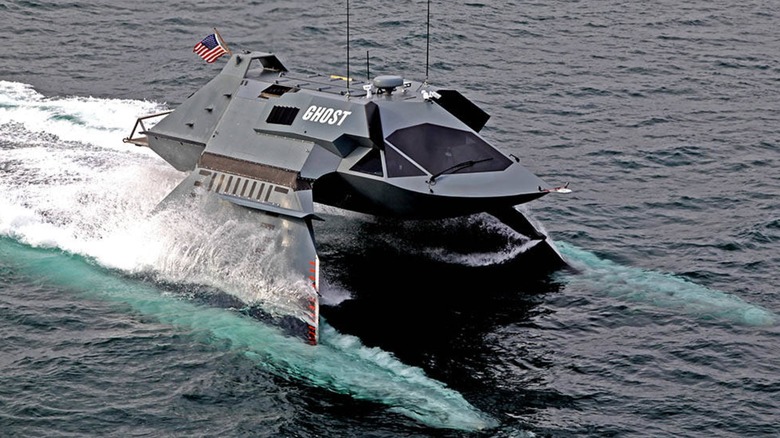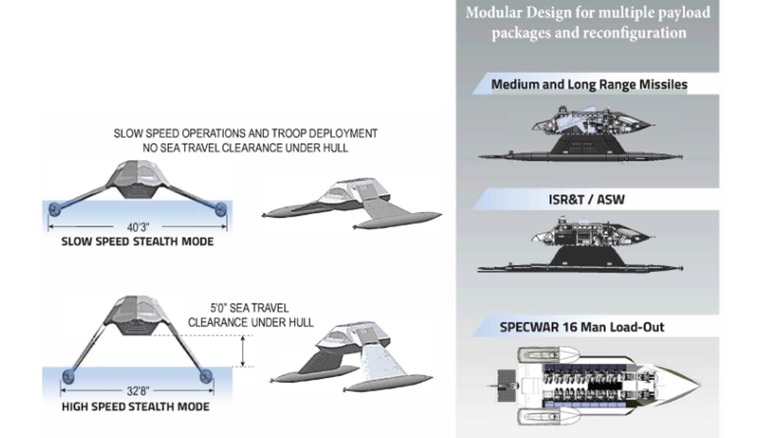General Dynamics Reveals Revolutionary New Surface Ship: The 'Ghost'
With only a quarter of the century behind us, it's clear from combat operations throughout the 21st century that drone warfare is the way of the future. Drones took to the skies before the new millennia, but they came into focus in the aughts, flying intelligence, surveillance, reconnaissance, and targeting (ISR&T) missions, helping during combat search and rescue operations, and eliminating targets. In the war in Ukraine, cheaper, less functional drones are destroying armored vehicles almost daily.
It's clear drones are here to stay, and services like the U.S. Army are integrating new drones into its companies and battalions. While most people think of drones as aircraft, they range from things that roll and fly to vehicles that swim on or below the water's surface. Northrop Grumman is developing an underwater Manta-Ray drone, while General Dynamics has been hard at work developing its GHOST Small Unmanned Vessel, a Small Waterplane Area Twin Hull (SWATH) craft that could change naval warfare.
The GHOST is being designed for quick fleet insertion and rapid construction, making it relatively easy to deploy in a variety of environments. These small ships are fast, can be configured for personnel, are otherwise controlled remotely, and are proven stable up to 40.3 mph, which is incredibly fast on the water. Because of their size, they can be deployed by amphibious and cargo ships, via trucks, or carried and dropped from airplanes, making the GHOST a highly versatile and potentially useful tool in the U.S. Navy's toybox.
GHOST Small Unmanned Vessel
The GHOST is an interesting vessel in that it is remotely operable but can also support a crew of two. Additionally, It can accommodate ten passengers with standard seating or 16 with maximum seating. This makes it effective at amphibious landings, whether it has a crew or not. It can pick up passengers and take them to safety, or it can be utilized as one of the many awesome vehicles used to insert a Navy SEAL team onto a shoreline. The GHOST has a maximum endurance at its top speed of 6.4 hours, and it has a 20.4-hour total endurance range.
The GHOST prototype is powered by two T53-L13B turboshaft engines, providing a combined 2,380 shp. These are small vessels, only displacing 22.4 to 30.2 tons of seawater, but they can carry a payload of just over two tons. They measure 25 to 40 feet wide, depending on the strut angle, and they're 65 feet long in their entirety. The GHOST's modular design allows for a variety of mission sets, including carrying medium and long-range missiles, ISR&T, anti-submarine warfare, command and control, and a Special Warfare (SPECWAR) 16-personnel load-out.
The GHOST's unique configuration makes it easily adaptable to different mission requirements, and it's also what helps stabilize the vessel during high-speed operations. It's unclear when the GHOST will move from the prototype stage into full-scale production, but that might not happen. It's not unusual for the DoD to back away from a project before bringing it to fruition, but given the projected utility of the GHOST and its impressive capabilities, it seems unlikely the Navy wouldn't be interested in procurement.

